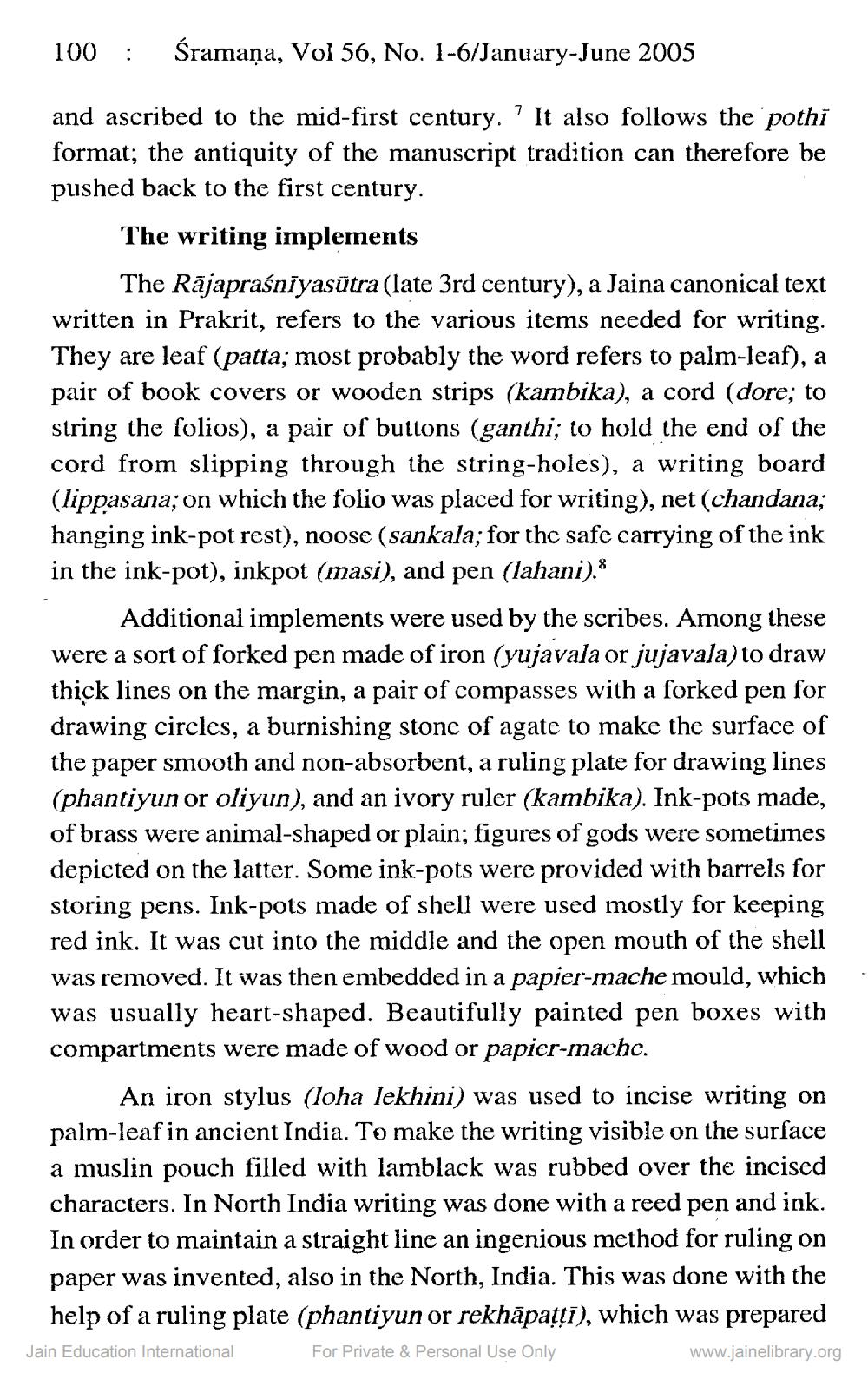________________
100:
Śramaņa, Vol 56, No. 1-6/January-June 2005
and ascribed to the mid-first century. ' It also follows the pothi format; the antiquity of the manuscript tradition can therefore be pushed back to the first century.
The writing implements
The Rājapraśniyasūtra (late 3rd century), a Jaina canonical text written in Prakrit, refers to the various items needed for writing. They are leaf (patta; most probably the word refers to palm-leaf), a pair of book covers or wooden strips (kambika), a cord (dore; to string the folios), a pair of buttons (ganthi; to hold the end of the cord from slipping through the string-holes), a writing board (lippasana; on which the folio was placed for writing), net (chandana; hanging ink-pot rest), noose (sankala; for the safe carrying of the ink in the ink-pot), inkpot (masi), and pen (lahani).
Additional implements were used by the scribes. Among these were a sort of forked pen made of iron (yujavala or jujavala) to draw thick lines on the margin, a pair of compasses with a forked pen for drawing circles, a burnishing stone of agate to make the surface of the paper smooth and non-absorbent, a ruling plate for drawing lines (phantiyun or oliyun), and an ivory ruler (kambika). Ink-pots made, of brass were animal-shaped or plain; figures of gods were sometimes depicted on the latter. Some ink-pots were provided with barrels for storing pens. Ink-pots made of shell were used mostly for keeping red ink. It was cut into the middle and the open mouth of the shell was removed. It was then embedded in a papier-mache mould, which was usually heart-shaped. Beautifully painted pen boxes with compartments were made of wood or papier-mache.
An iron stylus (loha lekhini) was used to incise writing on palm-leaf in ancient India. To make the writing visible on the surface a muslin pouch filled with lamblack was rubbed over the incised characters. In North India writing was done with a reed pen and ink. In order to maintain a straight line an ingenious method for ruling on paper was invented, also in the North, India. This was done with the
help of a ruling plate (phantiyun or rekhāpatti), which was prepared Jain Education International For Private & Personal Use Only
www.jainelibrary.org




